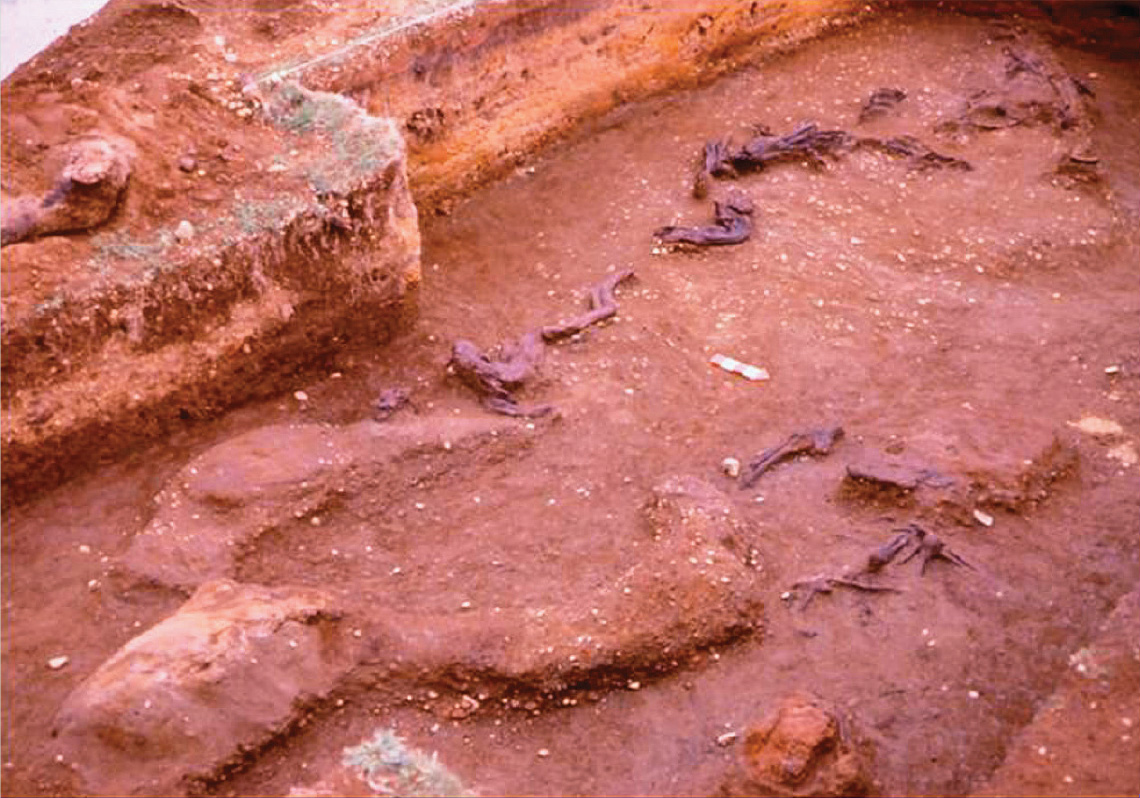Viewpoints 1.2: Stone Age Houses in Chile and China
• One of the central issues facing most human groups has been shelter from the elements. People’s varying solutions to this issue reflect the environmental challenges and opportunities offered by their particular surroundings. Not only are houses physical structures, however, but they also reflect, communicate, and shape cultural and social values. The photographs on this page show the remains of houses built during the Paleolithic and Neolithic periods in two parts of the world very far from one another.

Monte Verde Monte Verde in Chile dates from about 12,000 B.C.E. The archaeologists who have studied this site have concluded that here, along a creek, a small group of perhaps twenty to thirty people built a 20-

Banpo The village of Banpo near Xi’an in China dates from about 4500 B.C.E. Archaeologists have concluded that a group of several hundred people built fifty or so houses there, along with kilns for making pottery and cellars for storage. They built each house by digging a shallow hole as a foundation, surrounding this with walls made of stakes interwoven with branches and twigs, and plastering this with mud, which dried to become wind and water resistant. They made the roof out of thatch made from millet and rice stalks, grains they raised that formed the main part of their diet. (JTB Photo/SuperStock)
QUESTIONS FOR ANALYSIS
- From the photographs and the descriptions, what similarities and differences do you see in the two types of houses?
- Monte Verde was a Paleolithic community of foragers, and Banpo a Neolithic community of agriculturalists. How might the differences between the two houses have been shaped by the technology of food production? What other factors might account for the differences?
- It is easy to see the vast differences between these houses and those of today, but what similarities do you find? What social and cultural values might lie behind these similarities?